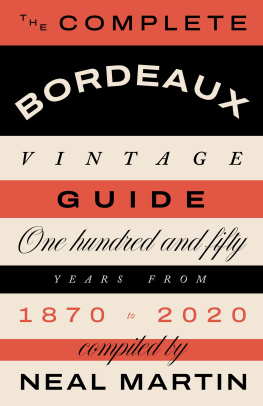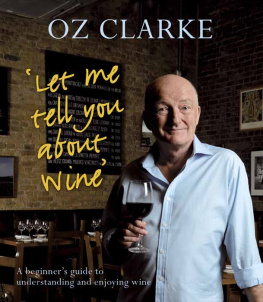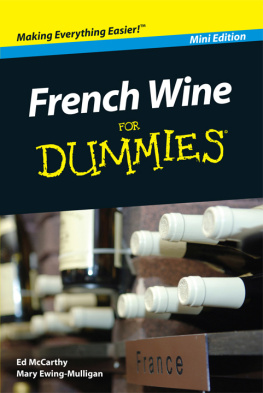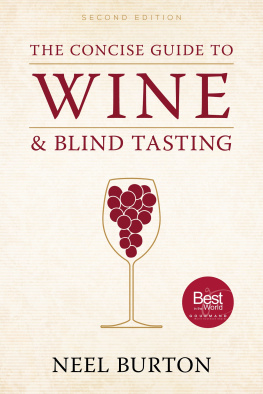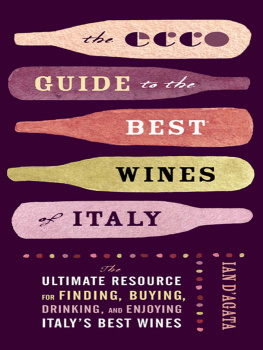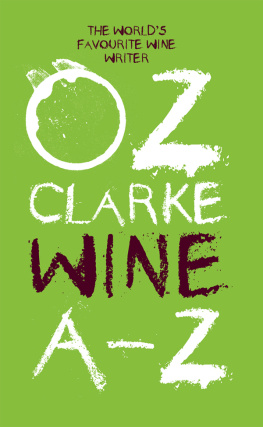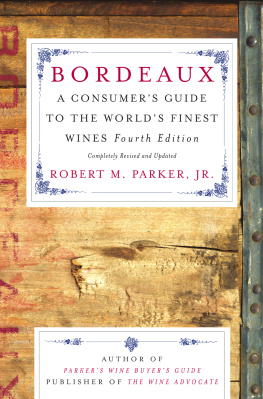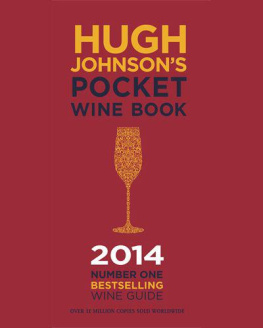
Botrytis the process whereby white grapes are infected by a particular fungus, botrytis cinerea, known as pourriture noble or noble rot, that shrivels the berry and concentrates the sugar inside to create sweet wine such as Sauternes
Chaptalisation the addition of sugar to the must in order to increase the alcohol level
Chef de culture vineyard manager
Coulure when vines flowers fail to set and become grapes due to inclement weather during fleuraison
Cuvaison the period when the wine is in vat
Cuverie the vat-room where wines are fermented
Dbourrement bud break
Dlestage the process of draining the wine from the fermentation vat, then pumping it back in over the cap of grape solids to enhance colour and flavour. Often referred to as rack and return, it is frequently used in weaker growing seasons
claircissage the removal of buds early in the growing season to thin the crop and lower yields
grappage de-stalking. Practically all of Bordeauxs wines have their stalks removed by a de-stemmer, or grappoir, in contrast to Burgundy where the stems are often left on
Eudemis botrana more commonly known as the grape berry moth (Lobesia botrana), it tends to invade vineyards in June. The first generation feeds on the leaves while the second bores into berries to munch away the pulp. It seemed to beset Cheval Blanc and doubtless many other estates in the first decade of the 20th century, as recounted in the diaries of proprietor Albert Fourcaud-Laussac
Fleuraison or flowering of the vine, which usually occurs around the end of May or beginning of June. A good flowering gives the potential for a larger crop and vice versa. Mi-fleuraison is the midway point, often used as a timing indicator to compare with other growing seasons
Green harvest the removal of bunches during the growing season to reduce yields. Known as vendange en vert in France
Grle French for hail
I.N.A.O. Institut National des Appellation dOrigine (renamed the Institut National de lOrigine et de la Qualit in 2007), the French governments legislative body that sets the rules of viticulture and winemaking
Maceration the practice of leaving red wine in contact with the skins, stalks and seeds after the must has fermented in order to extract colour, flavour and tannic structure. This is done by pumping-over (remontage) or pressing-down (pigeage), which increase the level of contact to whatever degree the winemaker desires. The skins, stalks and seeds are then removed and pressed, with some added back into the must
Matre de chai cellar-master
Mildew/downy mildew cryptogamic or fungal diseases that can flourish in wet conditions and are remedied by spraying copper sulphate
Millerandage when poor fertilisation during flowering creates berries that differ in ripeness and size within the same bunch, making picking more difficult
Must the unfermented grape juice after crushing and pressing
Must weight the level of sugar (mainly fructose and glucose) in grape juice; the higher the sugar, the higher the potential degree of alcohol
Ngociant basically a wine merchant
Nettoyage readying the vines for harvest, perhaps by removing excess leaves or obviously unripe bunches, to help make picking efficient
Oidium otherwise known as powdery mildew, this cryptogamic/fungal disease is remedied by the application of sulphur
Passerill bunches that are left on the vine to dry and shrivel, increasing sugar concentration
Phylloxera a parasitic disease that came close to wiping out winemaking in Bordeaux and indeed, around the world. The only solution is re-grafting the vine onto American rootstock that was found to be phylloxera-resistant. Nearly every vine in Bordeaux is on this rootstock
Primeur (en) the sale of the most recent vintage by ngociants to merchants the spring after harvest, sometimes known as futures. The wines are unfinished, though by the time they are tasted by merchants and critics, the final blend has usually been done
Racking the transfer of wine from one vessel to another. It often refers to moving maturing wine from one barrel to another in order to remove the gross lees that fall to the bottom and expose the wine to oxygen. This is traditionally done by pump, though many wineries are now designed so it can be done via gravity alone, which disturbs the wine less
Reductive winemaking limiting the exposure of grapes, prefermented juice and maturing wine to oxygen via the use of inert gas and sulphur dioxide in order to preserve fruit
Remontage see Maceration
Rendement French for the yield of a vineyard
Reverse osmosis a technique for reducing alcohol by passing the wine through a semi-permeable membrane. Often shortened to R.O.
Rootstock known in France as a porte-greffe, this is the base of the vine, which now always comes from American plants to protect from phylloxera. The upper part is grafted on top
Smudge pots oil-burners placed in vineyards at night to increase ground temperatures when there is a high risk of frost
Sorting table a table installed at the winery reception during harvest where eagle-eyed and nimble-fingered workers (often women, it must be said) extract damaged or unripe berries, leaves, or simply anything undesirable in the vat. Optical sorting tables use technology to carry out the same process and were introduced in the early 2000s
Tannin essentially tannins are the skeleton of the wine, providing the backbone and grip and lending the wine weight. These will polymerise with bottle age, so that an initially hard wine softens over time
Vendange French term for harvest
Vendangeur a harvester
Vraison the changing of berry colour from green to red, which usually occurs around early August
Vin de presse the pressed wine. The grape skins and pips are pressed and the free-run juice, often high in tannins, may be added to the blend to impart more colour and structure
Volatile acidity excessive acidity that can be caused by an uncontrolled alcoholic fermentation. In small doses it can be pleasant, but often causes malodorous vinegary smells
There are too many people who have generously opened bottles over the years. I would be remiss not to mention the vital role played by Linden Wilkie and Jordi Oriols-Gil in the numerous events that both have organised over many years. Also to Michael Vollmerich who introduced me to the tasting group in Hong Kong that has organised some incredible line-ups.
Of course, I am always grateful for the chteaux prepared to raid their own cellars to conduct vertical tastings, some of which were specifically organised for this book. A special thanks also to Bill Blatch, whose insight into Bordeaux is unparalleled and whose vintage reports are the gold standard for reporting a growing season. I must also thank the following who cracked a few bottles of Bordeaux over the years: Mark Andrew, Nicolas Audebert, Claire Bailey, Aline Baly, Lilian Barton-Sartorius, Juliette Bcot, Johan Berglund, Olivier Bernard, Jean-Claude and Olivier Berrouet, Gareth Birchley, Philippe Blanc, Jean-Jacques and Sverine Bonnie, Mathieu Bordes, Bruno Borie, Emeline and Franois-Xavier Borie, Hubert and Stphanie de Board, Jean-Baptist Bourotte, Brinda Brouhis, Stephen Browett, Lord Bruce, Frdric and Philippe Castja, Pierre Antoine Castja, Marielle Cazaux, Jean-Michel and Jean-Charles Cazes, Dr. Kevin Chan, Chris Chan, Joost Clarjis, Emmanuel Cruse, Didier Cuvelier, Mathieu Cuvelier, Sara Lecompte Cuvelier, Paul Day, Jean-Philippe Delmas, Jean-Hubert Delon, Philippe Dhalluin, Thomas Duroux, Frdric Engerer, Frdric Faye, Hlne and Patrice Garin-Lvque, Aymeric Gironde, Sam Gleave, Nicolas Glumineau, Baptiste Guinaudeau, Lindsay Hamilton, Matthew Hemming MW, Alex Hunt MW for casting an erudite eye upon the classical selections, Herwig Janssen, Dan Keeling, John Kolasa, Ken Lamb, Ronan Laborde, Jean-Michel Laporte, Brnice Lurton, Henri Lurton, Pierre Lurton, Lili Ma, Marie-France Manoncourt, Franois-Xavier Maroteaux, Jean Merlaut, douard Miailhe, Franois Mitjavile, Christian and douard Moueix, the NHS for the life extension, Jean-Antoine Nony and Mrs. Mango, Grard Perse, Michel Reybier, Roy Richards, Saskia de Rothschild, Vronique Sanders, Christian Seely, all the Sexy Muscles gang in Hong Kong, Daisy Sichel, esteemed members of the Southwold group, Jos Sanfins, Oliver Slocock, Sam Tan and the CEC posse, Alfred Tesseron, Basile Tesseron, Alexandre Thienpont, Jacques and Fiona Thienpont, Jean-Luc Bad Boy Thunevin, Alexander van Beek, David Wainwright, Katharina and Konstantin Wolf and anyone else I have forgotten to mention. Also, I would like to thank all those that allowed me to reproduce some of the marvellous, evocative photographs for this book. Finally, never to forget those no longer with us: John Avery MW, Anthony Barton, Michael Broadbent MW, Prof. Denis Dubourdieu, Denis Durantou, Harry Gill, Thierry Manoncourt, Paul Pontallier and Steven Spurrier.
Next page
